* This article was originally published here
Make money online fast using proven strategies, courses and trainings. Best recommended product reviews, affiliate marketing tips and resources.
Thursday, August 31, 2023
10 Tips For Launching A Successful Business On Amazon - News from Wales
* This article was originally published here
Can Threads Still Capitalize on Early Interest?
Has the opportunity for Threads already passed?
* This article was originally published here
Wednesday, August 30, 2023
How To Use AI to Find The Gaps in Your Messaging
The other day, a client sent along a Word document filled with all the text they were going to put on their new service page.
This was a detailed run-through of what they sell, and the document was pages and pages long.
Their question to me was pretty simple: Does this cover everything we need to?
But the challenge underlying that question was way more complex — and familiar to all of us. We need our messaging to be right. But when we’re close to something, when we live in it day in, day out, it’s damn near impossible to see it with fresh eyes.
This, to me, was a perfect application for AI, which always has fresh eyes.
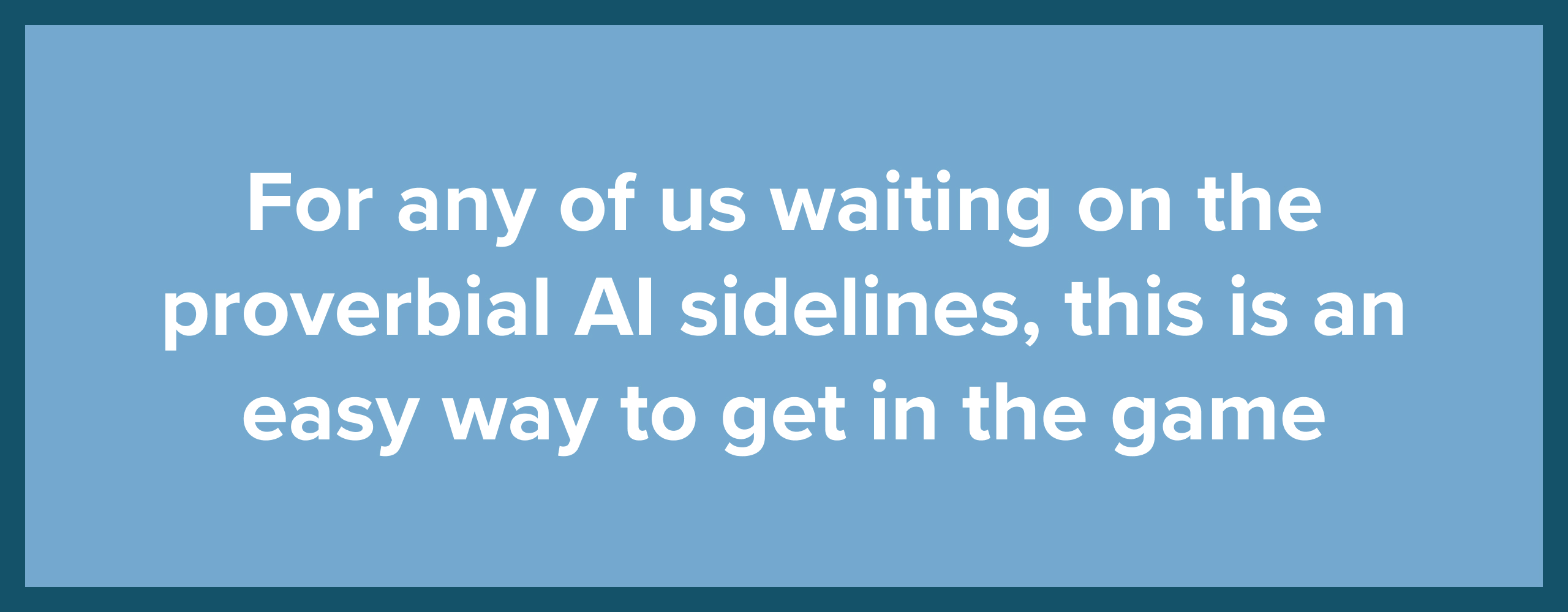
And for any of us waiting on the proverbial AI sidelines, this is an easy way to get in the game.
Let me explain exactly what I did.
Practical AI application
For a lot of professionals, AI still remains more of a toy than a tool. Something we use here and there. But maybe we find ourselves impressed but not thrilled with the results, so it stays on the back burner.
But this document from the client was a perfect real-world use case.
Here’s what I did: I opened Chat-GPT4 (I use the paid version, which is $20 per month), and I got really specific about what I wanted. I asked the tool to read the text that the client had written and look for holes and oversights that a new visitor might encounter. Then I pasted in the huge block of text and hit return.
The result was exactly what I needed: An objective list of what was missing in the copy they’d written. I was able to bring this list to the client as we looked through the document together.
Not everything was useful, but in this kind of situation, I’d rather have a list of too many oversights instead of a list of too few.
4 principles to guide your AI
Wharton professor Ethan Mollick, who has become a trusted visionary in the AI revolution, recently shared four principles you should bring to any work you do.
Whatever your opinion, they’re useful to consider.
- Use AI for everything you can. Tools are proliferating. New ones come out every day. We should always be on the lookout for novel ways to utilize AI’s power.
- Be the human in the loop. AI has astonishing abilities — and sobering limitations. It is not a human with judgment and character. You need to keep humanity in whatever you’re doing.
- Treat the AI like a human and tell it who it is. AI can be whoever you want it to be, but only if you’re clear. The better the input, the better the output.
- Remember, the AI you’re using today will be the most rudimentary AI you ever use. It’s true. Things are advancing so quickly that what’s new today will be outdated next month. Think about early cell phones or early airplanes. They seemed high-tech at the time, but the advancements came swiftly. Same thing here.
I’ve kept Mollick’s ideas in mind as I’ve done my own exploration.
Let’s take the example above — the copy the client shared — and see how these principles apply.
- Use AI for everything you can. Yes. This was a new application for me. I’d never done this before with AI, but I knew that if I read through the whole webpage copy doc, I’d likely miss something, so I figured I’d give AI a shot. If we want to learn, we have to keep trying.
- Be the human in the loop. This is a huge one. Not all the suggestions Chat-GPT came up with were good. Some were valuable; many were useless. As the human in the loop, I was able to tell the difference. But I was glad to have a comprehensive list that I could work with.
- Treat the AI like a human and tell it who it is. Too often, people see AI tools as question-and-answer tools. We’re stuck thinking of it as a smarter Google or chatbot. I got more out of my prompts because I was detailed and specific. I treated the whole thing as a conversation, not a one question, one answer exchange.
- Remember, the AI you’re using today will be the most rudimentary AI you ever use. I realize there are still big limitations here. The AI can’t watch and digest video content. It can’t think beyond its abilities. It’s not able to really contextualize. But that doesn’t matter right now. Today, it helped me be better at my job.
I used Mollick’s suggestions. I applied AI to a real-world need, kept his principles in mind, and out came valuable results.
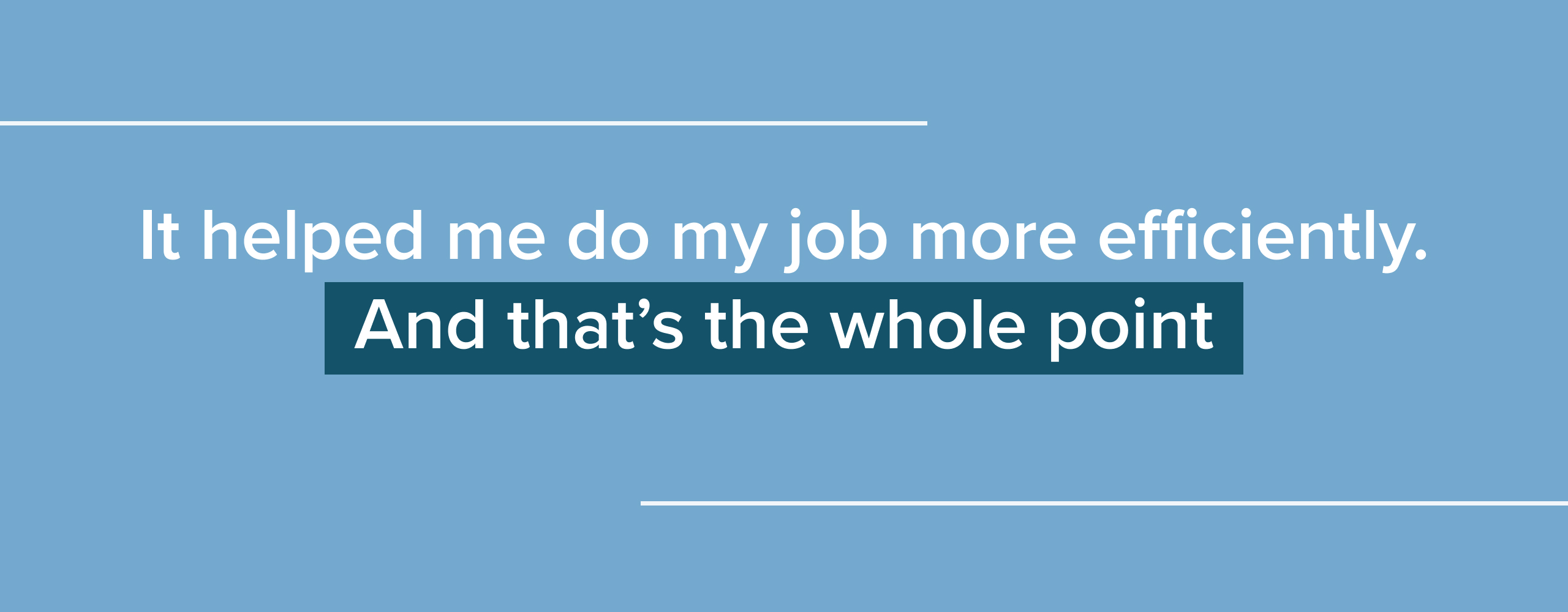
It wasn’t finished work I could publish somewhere — but it helped me do my job more efficiently. And that’s the whole point.
Real-world applications
So, how can you use this example to help your own business? Run your own website copy through ChatGPT and have it look for holes. Then, copy 10 competitors’ websites and do the same, pasting them in one at a time.
Find the topics that are missing from your industry, and use this information to inform your own content. If there’s a knowledge gap, there’s likely a trust gap.
If ChatGPT shows you that no businesses are talking about X, and buyers want to know about X, you can be the one to take the lead. You can be the one to answer the question. You can be the one to win the trust in the marketplace.
For those 10 competitors. Do any of them explain how pricing works? You can. Do any of them talk about the limitations of certain services? You can.
Use the tools, find the gaps, be the solution.
Author: cduprey@impactbnd.com (Chris Duprey)
* This article was originally published here
Tuesday, August 29, 2023
Instagram Adds New Comment Reply Option, Tests Star Sign-Related Stickers
Some new content creation and engagement options on IG.
* This article was originally published here
Monday, August 28, 2023
A Comparison of the Features of Threads and X [Infographic]
Can Threads regain its early momentum and become a genuine X alternative?
* This article was originally published here
Sunday, August 27, 2023
Meta Shares Lead Generation Ad Tips [Infographic]
A handy overview of Facebook's lead gen ad tools.
* This article was originally published here
Saturday, August 26, 2023
X Officially Launches the First Stage of Job Listings for Verified Organizations
Another element in Elon's "everything app" vision.
* This article was originally published here
Friday, August 25, 2023
Meta Looks to Pitch Next-Gen Ray Ban Stories Glasses to Live Stream Creators
This could prove to be a much stronger angle for the camera-equipped glasses.
* This article was originally published here
Thursday, August 24, 2023
HubSpot Pricing: Your Guide to Everything HubSpot Costs
So, you’re evaluating HubSpot for your marketing, sales, or service teams. (Or some combination of the three!).
Trust me when I say that HubSpot is a wonderful tool for executing and tracking your inbound marketing and sales strategies. But between the different offerings and tiers, plus add-ons and contact tier considerations — there’s a lot to navigate and evaluate when planning your investment.
It can be confusing, but for more than a decade, we’ve been helping companies of all shapes, sizes, and sectors find the best match for their marketing needs and budgets.
Below, we’ll break down everything you need to know about HubSpot pricing, and help you decide what the best package for your organization is. This includes:
- The HubSpot pricing basics: A breakdown of the different hubs and tiers
- An overview of HubSpot Marketing pricing
- An overview of HubSpot Sales pricing
- An overview of HubSpot Service pricing
HubSpot pricing basics: Hubs and tiers
HubSpot has three main software hubs: Marketing, Sales, and Service. They don’t function as separate platforms, but they are purchased separately.
Note: If you’re looking to host your entire website on the HubSpot platform, you’ll also want to check out CMS Hub, HubSpot’s content management system platform. We won’t go into that in this article, but you can learn all about it, including pricing, here.
To start with the basics, here’s a simple one-sentence explanation straight from HubSpot of what each hub does. (There is, of course, much more to this — but this will give you the general idea.):
- Marketing Hub: “Everything you need to launch effective marketing campaigns that make people interested in your business and happy to be your customer.”
- Sales Hub: “Get notified the moment a lead opens your email, track every interaction automatically, and organize all your activities in one place with HubSpot’s sales software. Start for free, and upgrade as you grow.”
- Service Hub: “Customer service software that builds organization and efficiency into your customer service team.”
Depending on what tech tools you use currently, you may or may not have a need for multiple hubs.
Many companies start with the Marketing Hub, and once they see and experience how easy the platform is to use, start to evangelize it to their sales and service teams.
If you’re not using a digital tool for any of those three main business functions (marketing, sales, service), starting with two or three of the hubs at once can be an amazing way to bring your company into the exciting world of automation, data collection, and process optimization.
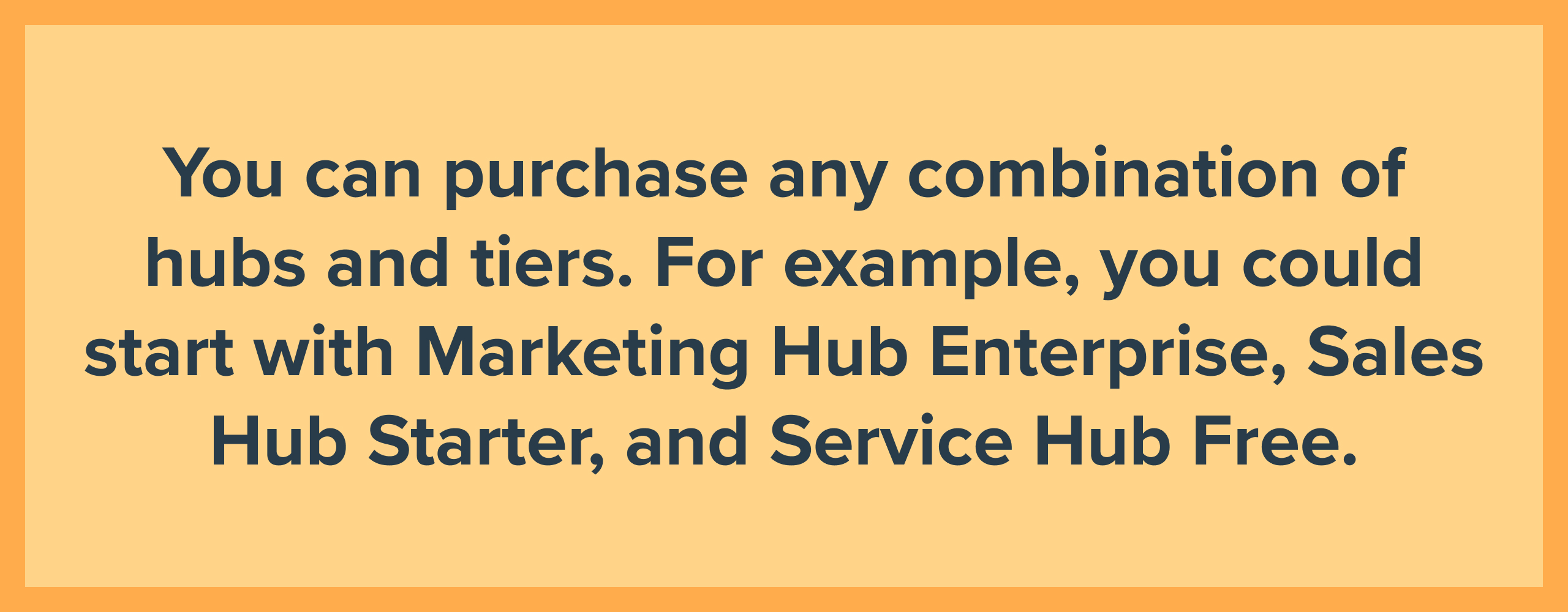
Each hub has four distinct tiers, from most basic to most sophisticated: Free, Starter, Professional, and Enterprise. As you move up tiers, you get more and more functionality and tools, along with fewer limitations.
You can purchase any combination of hubs and tiers. For example, you could start with Marketing Hub Enterprise, Sales Hub Starter, and Service Hub Free. However, HubSpot does offer a discount if you purchase the entire Growth Suite (all three hubs) at a single level.
You can also start with a lower cost level of the platform and upgrade at any time if you’re hesitant to make a commitment before getting your hands dirty in the tool for yourself.
As you upgrade, you’ll never lose any functionalities from other tiers; you’ll only add new ones.
Free-forever CRM
One of the first things you’ll see on HubSpot’s pricing page is its “Free Forever” CRM, or customer relationship management platform. The CRM serves as your contact database, where you can store an unlimited number of contacts, companies, deals, and tickets.
The main caveat to this “unlimited” storage is when you start using a paid version of the Marketing Hub. As soon as you switch to a paid Marketing Hub contract, you’ll have to pay per 1,000 contacts on an ongoing basis that are stored in your CRM. (More on this later.)
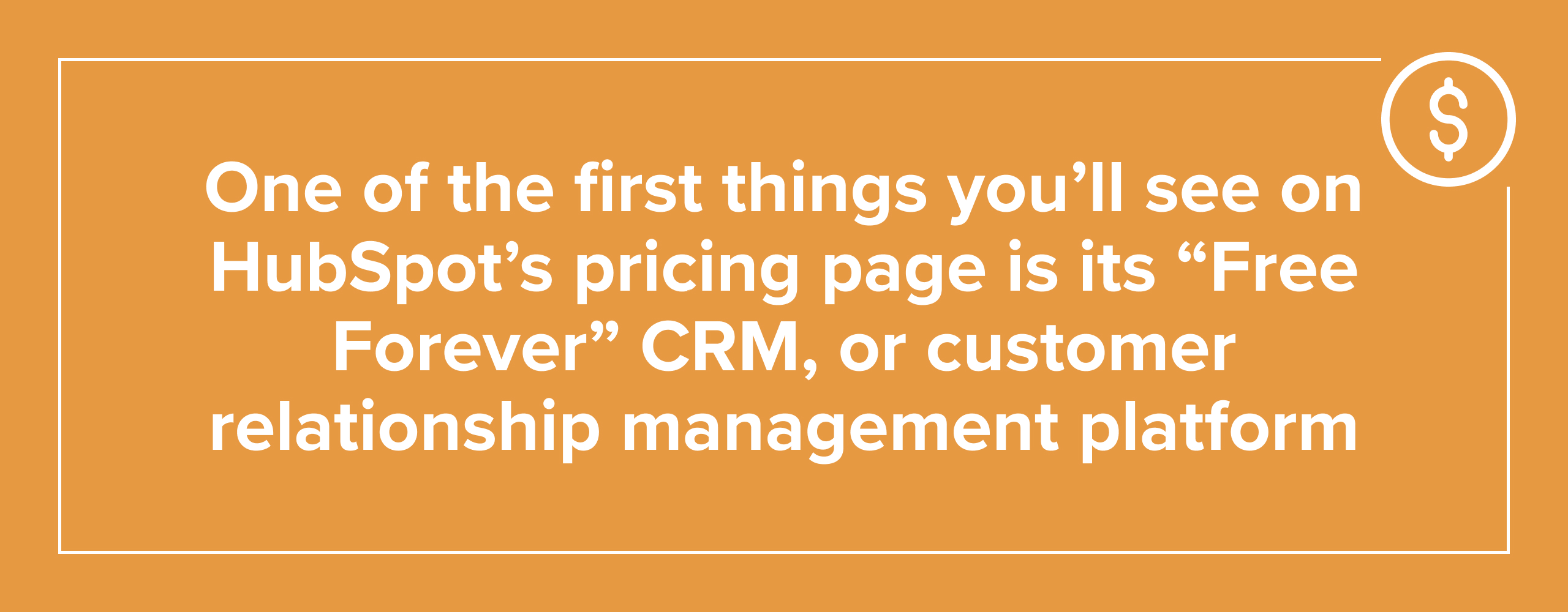 If your company has a high volume of contacts, this can be a major cost. In fact, you might pay more for your contacts than you do for the actual software subscription!
If your company has a high volume of contacts, this can be a major cost. In fact, you might pay more for your contacts than you do for the actual software subscription!
Below, we’ll break down the contact tier pricing for each level of the Marketing Hub.
Any portal you create will have the free CRM and the free version of all three hubs (Marketing, Sales, and Service). These free tools give you basic functionality to get you started with using HubSpot as a platform but are essentially a very simplified version of what you get with the paid hubs.
Sales and Service Hub ‘seats’
The pricing model is different for different hubs.
In the Marketing Hub, you have an unlimited number of users who can access the tools in your portal, but you are charged by the number of contacts you have.
With Sales and Service Hubs, any tier above free is on a pay-per-seat model. This means that in order to access certain tools and functionalities in your portal, users will need a paid seat just for them. (We’ll dive more into this later, too.)
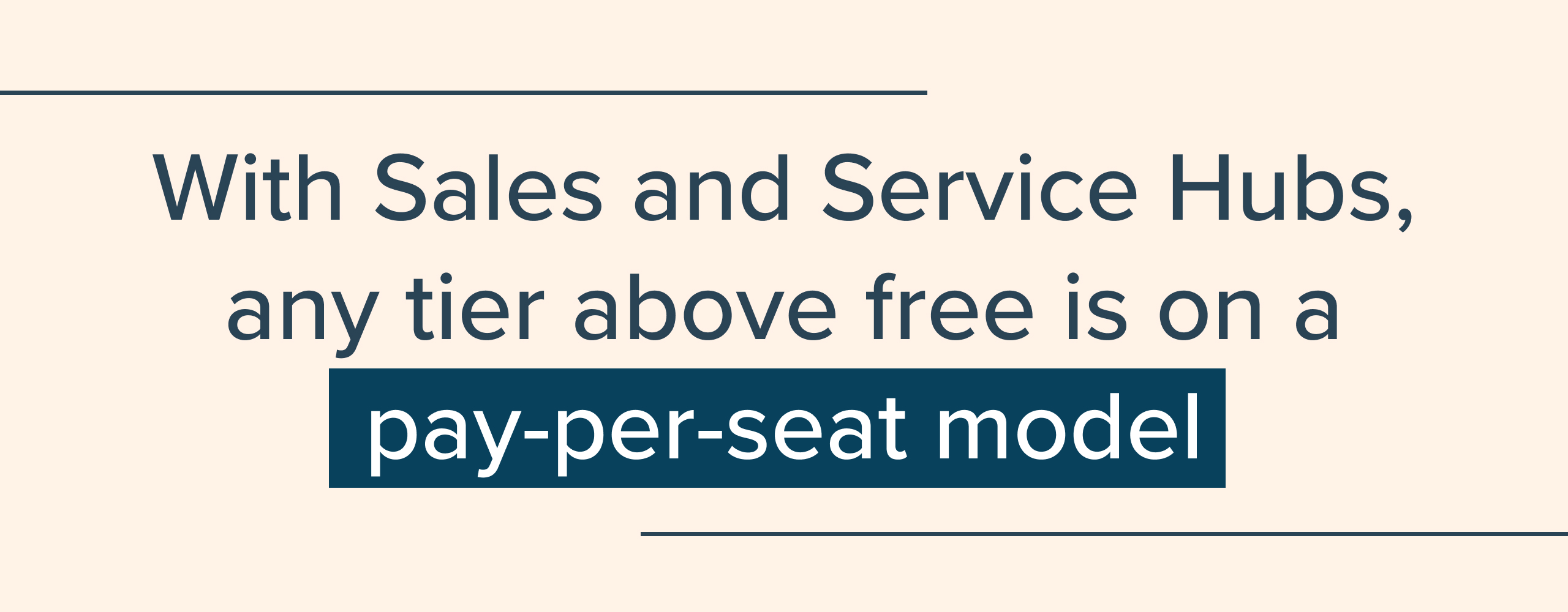
So, if you’re NOT using the Marketing Hub, and only using Sales and/or Service Hubs, you will have unlimited contacts. Just know that if you ever do start on a paid version of the Marketing Hub you will have to start paying for those contacts.
What our HubSpot pricing guide covers
Since there’s a lot to cover when it comes to all of this, we’ll organize this guide first by hub, and then break each hub down by subscription tier (Free, Starter, Professional, Enterprise).
Throughout each section, we’ll highlight important features and tools, as well as what kinds of companies or teams are a great fit for each hub and tier.
But first, here’s an over-simplified version of the cost breakdown across all the hubs and tiers:
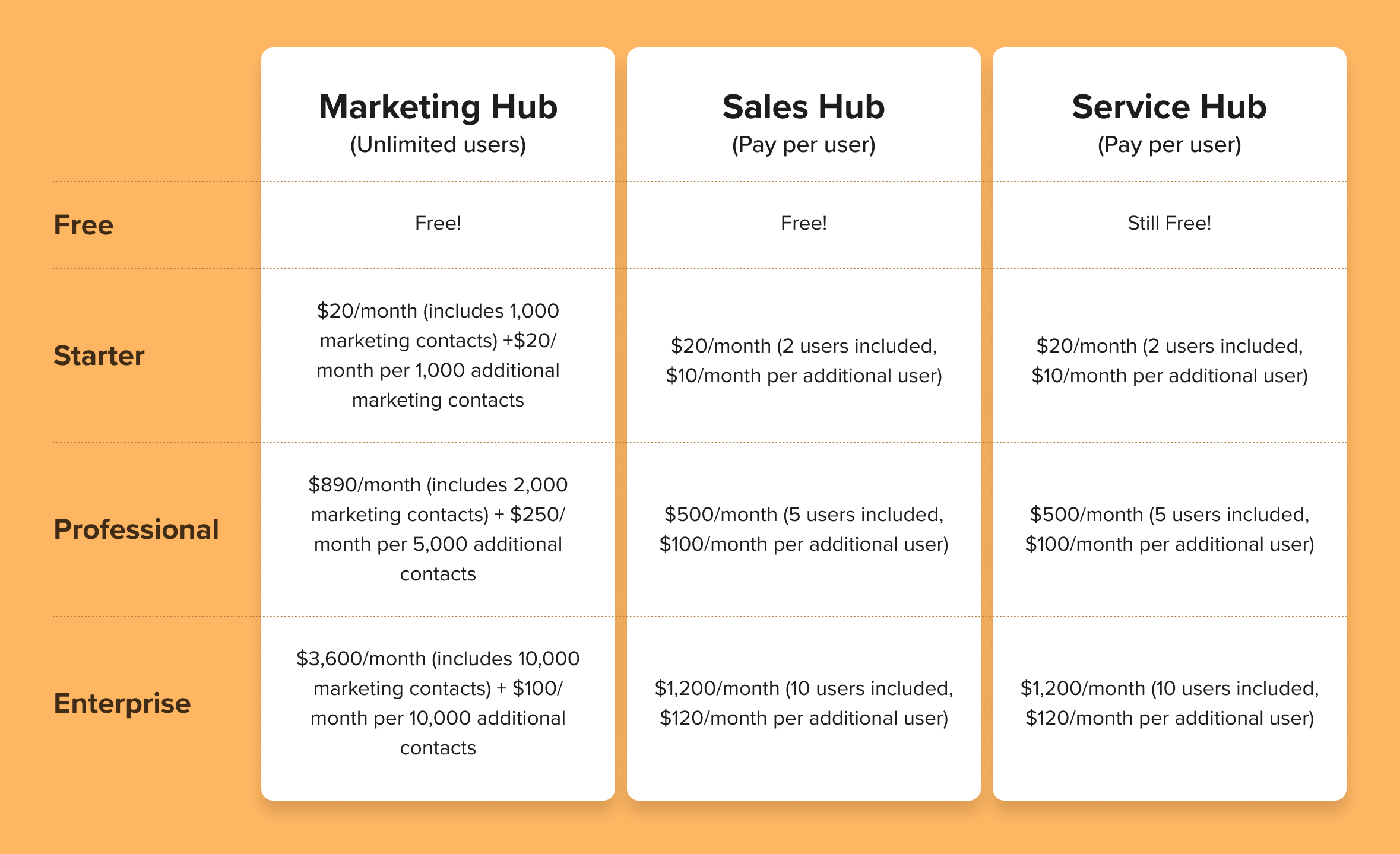
If you want to see a breakdown of pricing and calculate what you’d potentially be spending, visit HubSpot’s pricing page here.
HubSpot Marketing Hub pricing
For a super detailed breakdown of everything you could possibly want to know about HubSpot’s Marketing Hub, check out our definitive guide to HubSpot for marketing.
Free HubSpot Marketing Hub
The free tier of HubSpot Marketing Hub is the ultimate example of “try before you buy.” Much of HubSpot’s core functionality is available to you for the low low price of $0/month.
You can create basic forms, use live chat and (very) basic chatbots, manage contact records, and send out marketing emails.
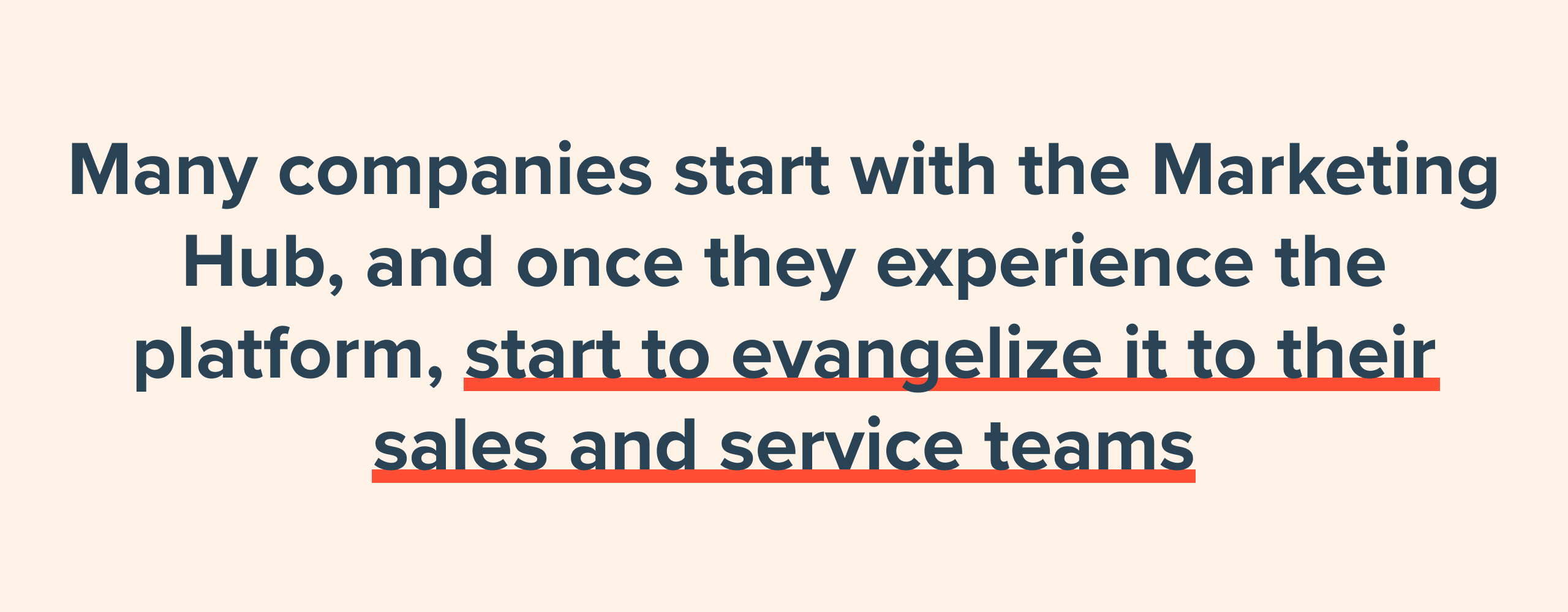
So what’s the catch? In this case, “free” does really mean free, but if you’re serious about inbound marketing, you’ll soon become frustrated by the feature limitations, such as only being able to create five dynamic lists or send 2,000 marketing emails in a month (not to mention the annoying “HubSpot” branding on all of your assets).
The only way to scale your efforts is to purchase a paid tier, but when you’re ready to take that plunge, which tier is the right fit as you grow your team?
Caveats to paid tiers
When you do decide to move forward with one of HubSpot’s paid tiers for Marketing Hub, it’s important to keep in mind that the biggest driving factor is functionality limitations and contact thresholds, not user limits.
This is great news for marketing departments with a lot of stakeholders (e.g., team members, freelancers, interns, agency experts, or members of other departments who are simply “HubSpot curious”). You can invite everyone to the HubSpot portal party and not pay an additional cent.
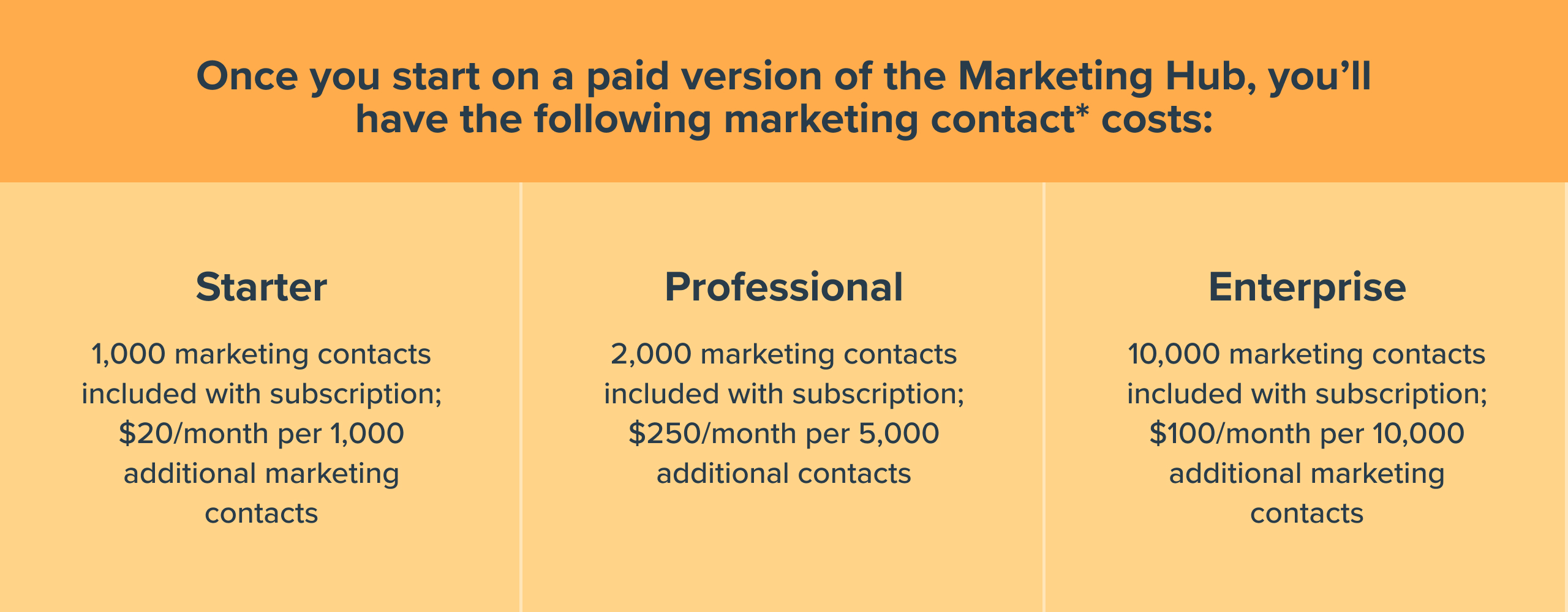
*What’s a marketing contact? In HubSpot, marketing contacts are defined as any contacts you're actively communicating with through marketing emails or ads. You can store up to 1 million non-marketing contacts in the CRM for free, but you’ll have to pay for contacts you're sending marketing emails to or targeting with ads through HubSpot, according to the pricing above.
Keep a close eye on how many marketing contacts you have in your portal. If you go over your limit, you’ll be billed the next day for the next band of contacts (1,000 for Starter, 5,000 for Pro, and 10,000 for Enterprise), and won’t be able to decrease your marketing contact tier until your next contract renewal.
Pro tip: You’ll notice that marketing contacts become significantly cheaper once you get to the Enterprise level of the Marketing Hub. If you’ve got over 60,000 contacts (or know you will in the near future), you’ll actually save money on Enterprise over Professional or Starter.
Starter ($20/month + contacts)
HubSpot’s $20/month Starter package offers three key upgrades from the free tools:
- The “HubSpot” branding on all of your assets disappears
- You get more lists and more emails (instead of five lists you get 25, and instead of 2,000 emails a month you get five times your contact limit)
- You get access to a drag-and-drop landing page builder.
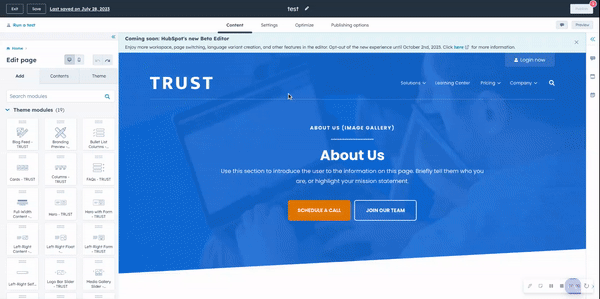
However, once you cross over into the pay-to-play arena, the most important thing to keep in mind is your contact limits.
At the free tier, you can store up to 1 million contacts in your HubSpot database at absolutely no charge, but as soon as you purchase a paid tier, you’ll quickly find that contacts come at a steep cost. The first 1,000 contacts are included in the $20 flat fee, but you'll have to pay per 1,000 contacts above your normal monthly rate (starting at $20/month per 1,000 and scaling down the more contacts you get).
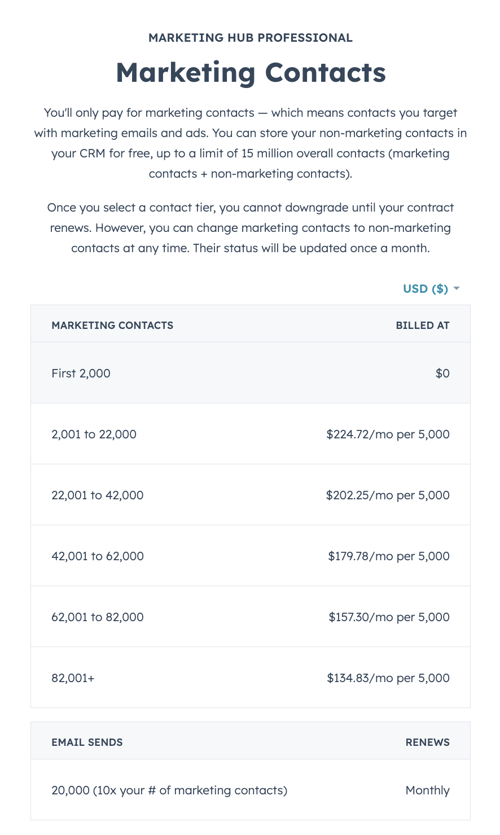
The biggest takeaway: Upgrade with caution and always remember to clean out unused contacts in your database.
Pro tip: If you’re a serious inbound marketer looking to automate some processes, the Starter tools are really only going to get you so far. You will be limited to 10 automated actions on forms and 10 automated actions on emails.
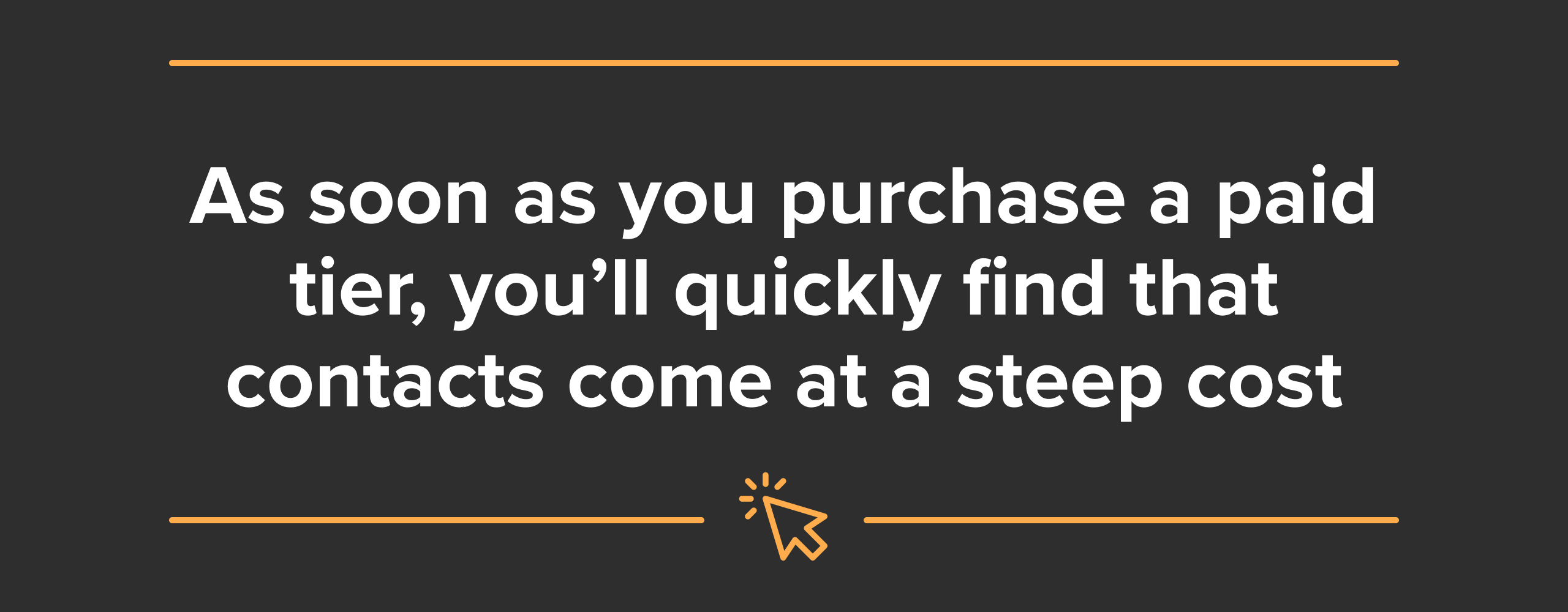
For smaller companies/teams or anyone just getting started with marketing automation, this could be just enough. For others looking to save time with more robust, automated experiences, you'll need to go to the Professional level.
Marketing Hub Starter is a great fit for: Small companies/teams (companies of 1-20 employees, marketing teams of 1) who want to get their feet wet with HubSpot’s basic functionality without making a major financial commitment, or companies who are just getting started with inbound marketing and want a tool that will grow and scale with their budding strategies.
If you already know you’re going to want marketing automation tools, customized reporting, and detailed tracking of your results, you’ll quickly hit your limit with Starter, and may as well just start at Professional.
Professional ($890/month + contacts)
Marketing Hub Professional includes 2,000 contacts at the $890/month subscription. For each additional 5,000 contacts, you’ll pay $250/month.
For example, if you have 5,000 contacts, you’ll pay $1,140 per month – that’s the base $890 + $250 for 5,000 additional contacts.
Pro is where it gets really good. While the Free and Starter tools are a great place to start for anyone who's just getting going with inbound marketing, HubSpot Marketing Professional is for the serious inbound marketer.
The Professional-level tools are where you can really start automating your processes, as well as creating and tracking content on the HubSpot platform.
The major added features above Starter include:
- Content tools
- Blog hosting
- Content strategy/SEO tools
- Social media publishing tools
- Calls-to-action (trackable buttons/graphics/links)
- Video hosting and basic reporting
- SSL certificate and subdomains (for hosting landing pages and/or blog articles)
- Automation and optimization tools
- Workflows (HubSpot’s automation engine)
- Smart content
- A/B testing emails and landing pages
- Custom reporting (up to 100 custom reports)
- Teams (creating your team structure in the tool and permission around teams)
- Salesforce integration (HubSpot’s only native CRM integration)
HubSpot Marketing Hub Pro is a great fit for: Any company serious about executing inbound marketing strategies, automating manual processes, and tracking the success of their digital marketing campaigns.
Enterprise ($3,600 + contacts)
Marketing Hub Enterprise was created for large marketing teams that will have a number of users and will need to partition the tool in different ways for different teams.
There are a handful of features in Professional that have increased limits when moving to Enterprise: 100 custom reports in Professional vs. 500 custom reports in Enterprise; 10 teams in Professional vs. 300 teams in Enterprise, etc.
Along with increased limits on different tools, the major added functionalities in Enterprise are:
- Multiple scoring properties
- Single sign-on (SSO)
- Custom attribution and event reporting
- Content partitioning
- CMS membership (restricting access to HubSpot-hosted pages)
- Hierarchical teams
- Account-based marketing tools
- Revenue attribution reporting
- Custom objects
Note: We go into much more detail about each of these features in our definitive guide to HubSpot for marketing. Check it out here!
Marketing Hub Enterprise is a great fit for: Large marketing organizations with multiple teams and lines of business that will need to easily partition different parts of the tools. Companies with large marketing contact databases (over 60,000) will save money on Enterprise, even if they don’t need all of the functionality.
Enterprise is also a great fit for marketing teams with more complex processes and advanced automation needs.
HubSpot Sales Hub pricing
The Sales Hub was HubSpot’s second major addition after Marketing Hub. It allows sales teams to track their activity and deals in the same place where all of their marketing data lives.
It uses the same exact CRM, which means if you’re using both the Marketing and Sales Hubs you’ll see activity for contacts throughout their entire lifecycle from the first touch to when a deal is closed.
Free
Like Marketing Hub Free, the free version of Sales Hub gives you an opportunity to try the platform before you buy it.
You’ll be able to set up one deal pipeline (with different deal stages) with easy meeting scheduling. You can manage your contacts and track when they’re opening and clicking on your emails, and even create up to five text templates and snippets to save time on the same types of one-to-one emails you’re sending all the time.
The free sales tools really give you a tiny taste of what the Sales Hub has to offer — we only recommend using the free tools if you’re a single user looking to improve productivity and track your own individual process better, since you won’t be able to customize the tools enough to make it work for a full sales team (or multiple teams).
Caveats to paid tiers
For both Sales and Service Hubs, you are allotted a certain number of users at the base pricing — two users for Starter, five users for Professional, and 10 users for Enterprise. That means if you want the Enterprise features, even if you’re a team of four, you’ll be paying for 10 seats.
Note: You will always be able to add an unlimited number of Free users.
If you have users that just need access to the database, but not to the added functionality of a paid seat, then you can always add them to your portal without a paid seat, and they’ll be able to access tools and functionalities that are in the free version of HubSpot (including your contact database).
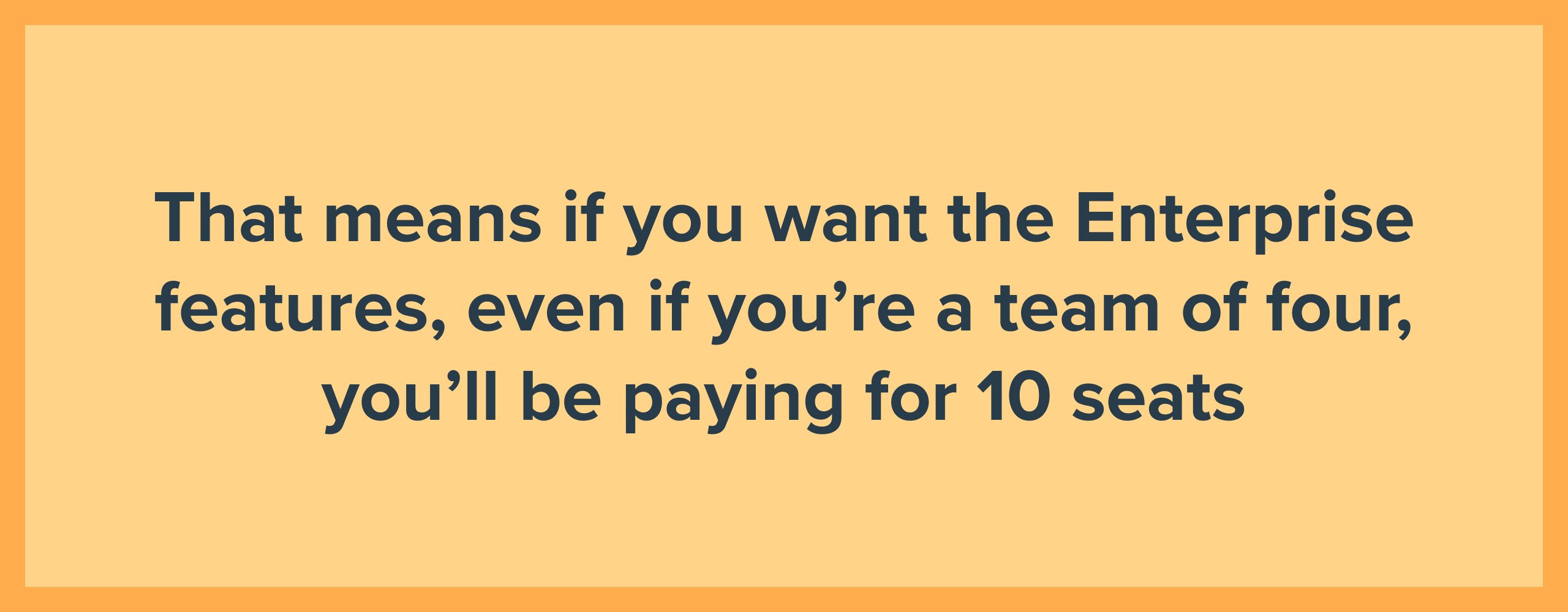
This means you really only need to buy paid seats for users who will be actively using the sales tools and needing access to advanced features.
Starter ($20/month — 2 users included)
Per the name, the Starter sales tools are a great place to get started with the sales platform if you’re not ready to make a larger financial investment and want to get some things set up before deciding whether or not to pay for the Professional or Enterprise tiers.
Here are the feature highlights:
- 1,000 email templates and snippets
- 1,000 automated email sequences
- Monthly revenue goal tracking
- 1 Conversations Inbox with team email
- 2 deal pipelines
- Conversation routing (assigning incoming chats and emails to individual users automatically)
Sales Hub Starter is a great fit for: Sales teams of one with no need for deal automation or custom reporting on sales productivity or pipelines. Again, it’s a great place to start if you want to try out some features and get your portal set up before investing in an upgraded level.
Professional ($500/month — 5 users included)
Like Marketing Hub, the Professional level is where you unlock the ability to automate manual processes and do custom reporting on your team’s processes.
Functionality highlights include:
- Up to 15 different pipelines (with different deal stages)
- Teams (up to 10)
- Automated sales email sequences
- Workflows (HubSpot’s automation engine)
- e-Signature (limited to 10 signatures per user per month)
- Product library and quotes
- 1:1 video creation
- Sales analytics (pre-built reporting on all kinds of different sales metrics)
- Custom reporting (up to 20 custom reports)
- Salesforce integration
- Stripe integration
- Slack integration
- Calculated properties
- Required fields for data management on deals
Sales Hub Pro is a great fit for: Sales organizations with 1-20 reps and one level of management.
If you’ve got many different sales teams with multiple levels of management, you’ll likely want to look at going Enterprise.
Enterprise ($1200/month — 10 users included)
Sales Hub Enterprise allows for more complex teams with sophisticated processes to be able to operate effectively in HubSpot.
Major functionalities that allow for that are:
- Hierarchical teams (mimic your team’s structure and set up permissions/assignments based on those teams)
- Playbooks (to enable your team to follow processes)
- Single sign-on (SSO)
- Webhooks (to pass information between HubSpot and other platforms)
- Quote-based workflows
- User roles (for managing high volumes of user permissions)
- Call transcription (English only)
- Recurring revenue tracking
- Custom Objects
Sales Hub Enterprise is a great fit for: Organizations with a large number of sales reps and managers who need a high level of configuration and governance over processes.
HubSpot Service Hub pricing
Free
HubSpot’s last version of “try it before you buy it,” Service Hub Free gives you access to set up one ticket pipeline, connect a team email (and manage that team email in one Conversations inbox alongside any of your live chat conversations), and look at canned productivity reports for your support reps.
Just like the free sales tools, the free service tools give you a small taste of what the Service Hub has to offer.
We recommend using the free tools if you’re a single user looking to improve productivity and track your own individual process better, since you won’t be able to customize the tools enough to make it work for a full customer service or support team (or multiple teams).
Caveats to paid tiers
All the same caveats as the Sales Hub exist here.
Starter ($20/month — 2 users included)
Like Sales Hub, Service Hub Starter will allow you to get your portal set up at a low cost, but unless you’re a super small team, it likely won’t give you enough functionality to be your solution long term.
Here are the feature highlights (look familiar?):
- 1,000 email templates and snippets
- 1,000 automated email follow-up sequences
- Basic monthly goal tracking
- 1 Conversations Inbox with team email
- 2 ticket pipelines
- Conversation routing (assigning incoming chats and emails to individual users automatically)
- 10 reporting dashboards
Service Hub Starter is a great fit for: Service or support teams of one with no need for ticket automation or custom reporting on team productivity or pipelines. Again, it’s a great place to start if you want to try out some features and get your portal set up before investing in an upgraded level.
Professional ($500/month — 5 users included)
Like Marketing and Sales Hubs, Service Hub Professional unlocks automation capabilities as well as custom reporting and additional pipelines. Plus, you get access to customer surveys and a knowledge base.
Here are the major added functionalities you get:
- Up to 15 different ticket pipelines (with different ticket statuses)
- Knowledge base (searchable content for answering customer questions)
- Logged-in Visitor Identification (see in Conversations Inbox if a user is logged in on your site)
- 1:1 video creation
- Net promoter score, customer experience, and customer support surveys
- Custom reporting (up to 20)
- Workflows (HubSpot’s automation engine)
- Teams (up to to 10)
- Slack integration
- Calculated properties
Service Hub Pro is a great fit for: Services organizations with 1-20 reps and one level of management. If you’ve got many different support or services teams with multiple levels of management, you’ll likely want to look at going Enterprise.
Enterprise ($1200/month — 10 users included)
Service Hub Enterprise allows for more complex teams with sophisticated customer service processes to be able to operate effectively in HubSpot.
Added functionality includes:
- Hierarchical teams (mimic your team’s structure and set up permissions/assignments based on those teams)
- Goals (set quotas for users and teams)
- Playbooks (to enable your team to follow processes)
- Single sign-on (SSO) and Knowledge Base SSO
- Webhooks (that pass information between HubSpot and other platforms)
- Quote-based workflows
- User roles (for managing high volumes of user permissions)
- Call transcription
- Custom Objects
Service Hub Enterprise is a great fit for: Organizations with a large number of support reps and managers who need a high level of configuration and governance over processes.
Is the HubSpot pricing worth it for you?
There are so many different aspects of functionality across all of the HubSpot Hubs that it can be overwhelming to wade through.
The most important thing is to decide what’s most important for your organization (not only for where you are now, but how you’re looking to grow), and make sure the level you choose gives you access to those capabilities.
Need help deciding what level of HubSpot to go with? Talk to us!
Author: wsmith@impactplus.com (Will Smith)
* This article was originally published here
Wednesday, August 23, 2023
The Key to a Better Sales Process? Pretend to Be Your Own Customer
If you don’t understand your customer, you’re going to struggle to sell. And while it seems like common sense to “think like your customer,” I’m always astounded at how many businesses struggle to do so.
And here’s the worst part: They think they understand their customer. But they really don’t.
What they actually have is just a pile of assumptions based on limited (and often outdated) information, or some dusty old buyer personas about Homeowner Holly or Marketing Manager Martin.
That’s not going to cut it.
It’s time for some real learning, and the success of your organization could hang in the balance.
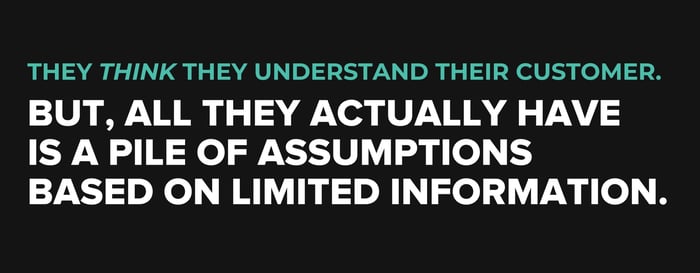
So, let’s dive into why so many business leaders struggle to understand their customers.
First off, who needs to understand your customers?
Whose responsibility is it to understand your customer?
Sales? Of course.
Leadership? Big time.
Marketing? 100%.
Customer service? You bet.
Every leader at your company — and every department they run — needs to understand your customer. After all, this affects messaging, strategic direction, communication, sales strategy, and more.
What follows are three common errors that I’ve seen in companies I’ve worked with — as well as steps you can take to solve them. Understanding how to correct these assumptions can help you take off your blinders and start to see.
Why you struggle to think like your customer
So, what’s holding you and your team back? These are the most common barriers I see companies face.
1. You’ve never been through your own sales process
This is something that never ceases to amaze me. I talk to business leaders and ask them about their sales process — and they only have a vague idea of what it entails.
I get a lot of “Well, I’d need to check in with my sales manager to learn more.”
And I shake my head.
Sales is the lifeblood of your business. You should have a damn good understanding of what that process looks like. (I mean, if it were up to me, I’d have a clear notion of every sales rep’s pipeline at any given moment.)
But just knowing your sales process is not enough to understand your buyers. You need to experience it.
How to fix it
You can’t understand your sales process until you go through it as a customer. No, seriously. Do it. 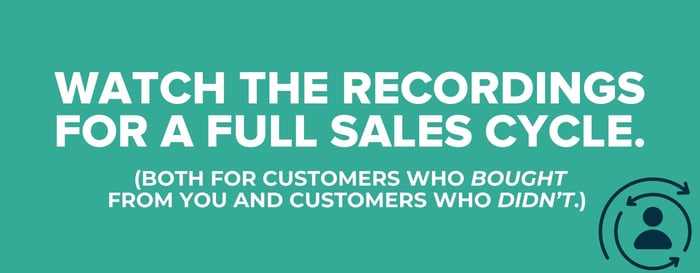 Start on your website, submit a form to book a call or a meeting, and see what kind of email confirmation you get and what kinds of materials get sent your way.
Start on your website, submit a form to book a call or a meeting, and see what kind of email confirmation you get and what kinds of materials get sent your way.
Scrutinize everything.
Imagine you’re a real customer. What are your impressions? Where are you frustrated by things going too fast or too slow?
Then, you should role-play a full sales call with members of your sales team. At the very least, watch the recordings for a full sales cycle — both for customers who bought from you and customers who didn’t.
This way, you’ll truly begin to understand what your customers experience.
2. Your whole sales process is about you, not your buyer
Take a look at your website. Take a look at your marketing emails. Check out your sales materials and presentations — everything you were sent or shown in the sales process.
If you’re like most companies, you’ll see a lot of “we” and “our” and “us.”
You know, stuff like this:
We offer state of the art…
Our service is…
We focus on...
Our team can...
What you’ll see much less of is “you.”
The website is about the company, not about the buyer
So, let me ask you this: How can you put yourself in your buyer’s shoes if you talk more about how great you are than you do about the problems they’re facing?
And I get it. You want to prove that what you sell is worthwhile — that people should consider buying from you. But you don’t do that with a hard sell.
You don’t get a second date if you spend the first date bragging about your resume.
How to fix it
The more you listen to your customers (in sales calls, surveys, interviews, etc.), the more you’ll hear them articulate their challenges.
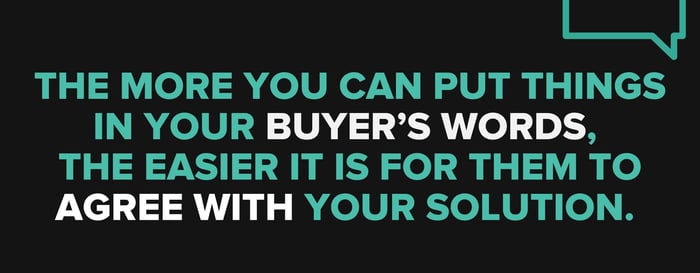
Then you can use this knowledge to improve your website headlines, email copy, and more.
The more you can put things in your buyer’s words, the easier it is for them to agree with your solution.
Want to see some examples of what I mean?
Look at ClickUp — a project management system. They don’t brag about features or UI or other minutiae.
Their message is simple. You’re wasting time. We can help you save time.
This is in the language of their buyer. You can delve deeper into product details as you make your way through their website. But their pop-ups, headlines, and large ads all communicate the same message — and it’s all in the language of the buyer.
Or, check out Toast, a platform for restaurants to streamline how they sell to customers. The value proposition is about the restaurants, not about Toast.
Same thing. The customers feel heard and understood.
Last one. Turo is like the Airbnb of car rentals. Their homepage is about the adventures you can have, not the app features or costs.
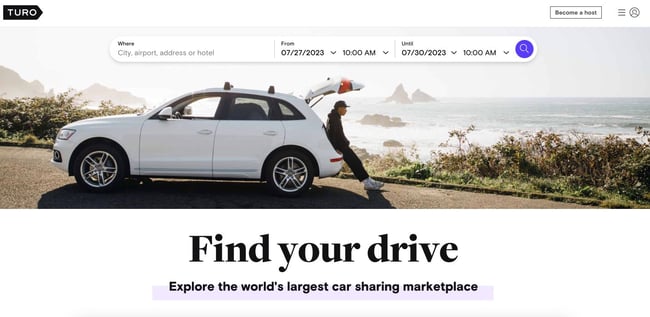
3. Your sales reps talk too much
A few years ago, Gong put out research based on more than 25,000 recorded B2B sales calls. The findings were pretty eye-opening:
Most sales reps talk for about 70% of any given meeting.
And the thing is — they don’t even realize they’re doing it.
When individual reps were presented with data about their own calls, they were floored. Salespeople tend to think they’re really good listeners, and that they’re focused on the needs of their buyers, but the data says otherwise.
All too often, sales pros fall back into their familiar talk tracks, putting themselves on stage and forcing the customer to sit there and listen.
But there was another key finding from the Gong report: The most successful sales reps — those who close the most and earn the biggest commissions — listen more than they talk.
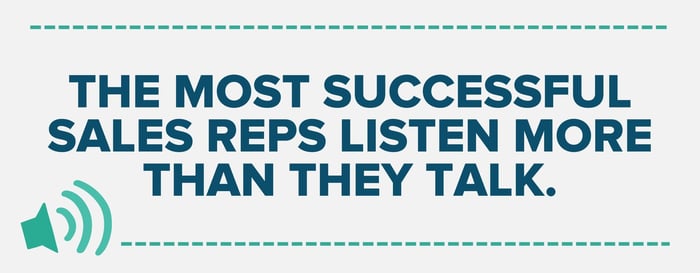
In fact, it’s almost the reverse of the average. Instead of talking for 70% of the meeting, top-performing sales reps talk for about 40%, leaving the bulk of the meeting open for the prospect to explain challenges and ask questions.
How to fix it
The first step toward solving any problem is to realize it’s a problem.
You can use a tool like Gong or Chorus to quickly analyze talk time. This gives you a baseline. Then, ask your sales reps to bring their number down by 10%.
To get them comfortable with this, do role-plays and other activities that promote active listening and limited talking.
Next, pare down your slide decks to help curb the urge to feature dump. The fewer the slides the better.
The business basic that everyone gets wrong
If you take these three steps, you’ll be astounded at how much you pick up. You’ll quickly find that many of your assumptions were wrong — and you can confirm the ones that were right.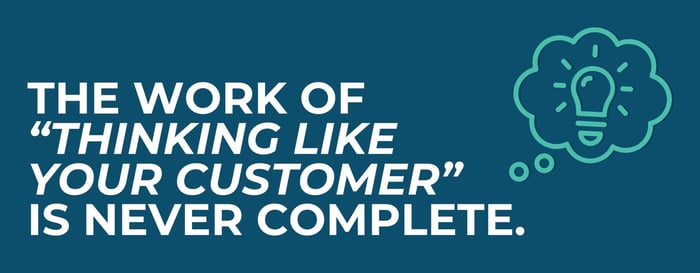
But always remember, your buyers are not a monolith. Even two customers who look identical on paper can be different in person.
Thus, the work of “thinking like your customer” is never complete.
Did you go through your entire sales process? Great. Now plan to do it twice a year from here on out.
Did you watch a sales call to hear straight from the buyer? Great. Now watch one call per week from here on out.
This is about building a company culture of inquiry and learning. When you take that stance, you can start to see what you’ve been missing all along.
Author: cduprey@impactbnd.com (Chris Duprey)
* This article was originally published here
X Previews Upcoming UI Change Which Will Hide All Action Buttons
The new X UI is coming. * This article was originally published here How to make $1000/day with affiliate marketing 24/7 - start here! ...
-
Mobile app design is in the midst of a never-before turmoil and trans...
-
Wondering if there's a good alternative service to skimlinks out there. I'm considering building an affiliate business that would re...
-
Districts are joining a complaint against Meta, Snapchat, TikTok and YouTube, but some doubt the firms can be blamed for teens’ mental healt...